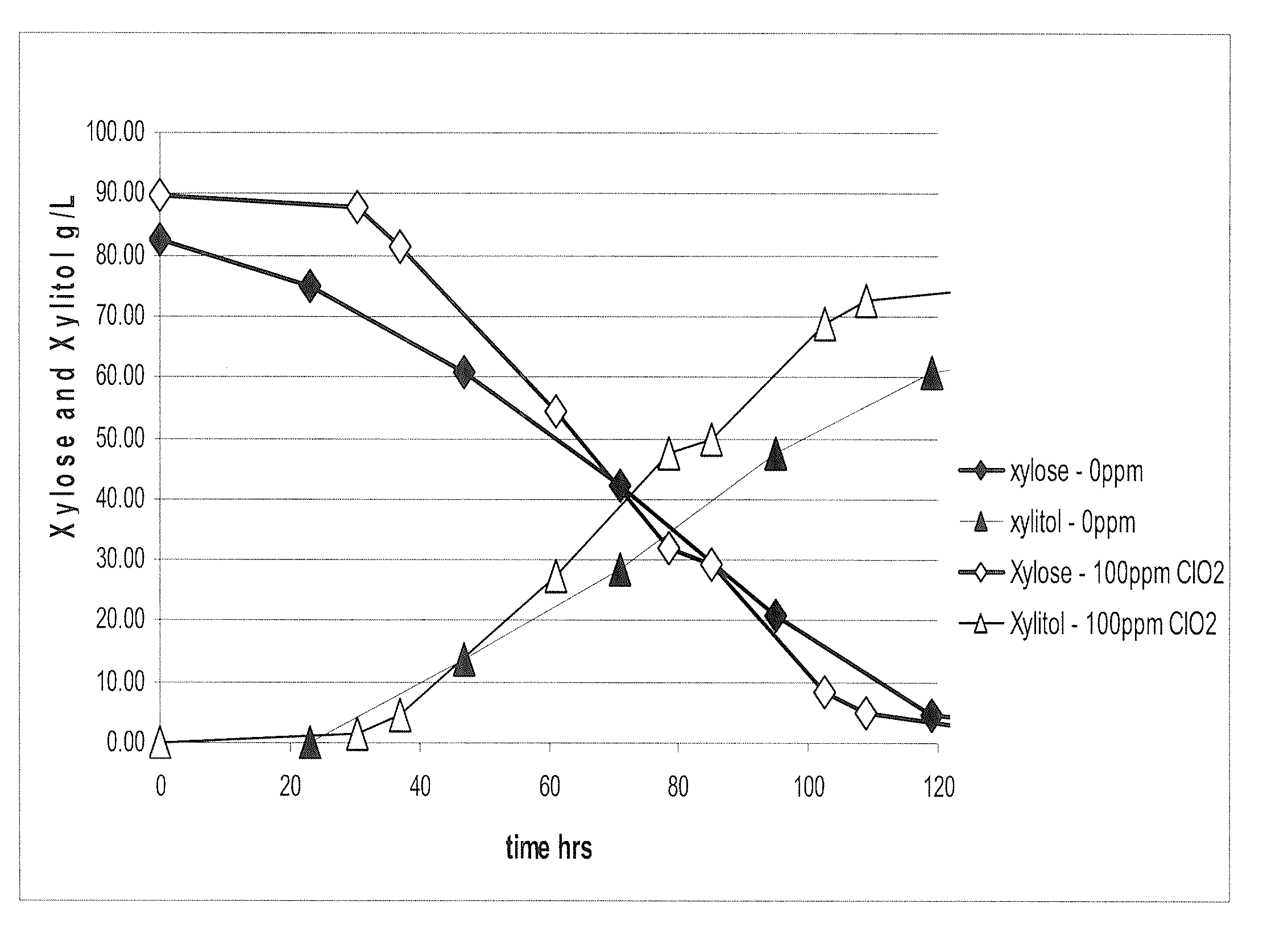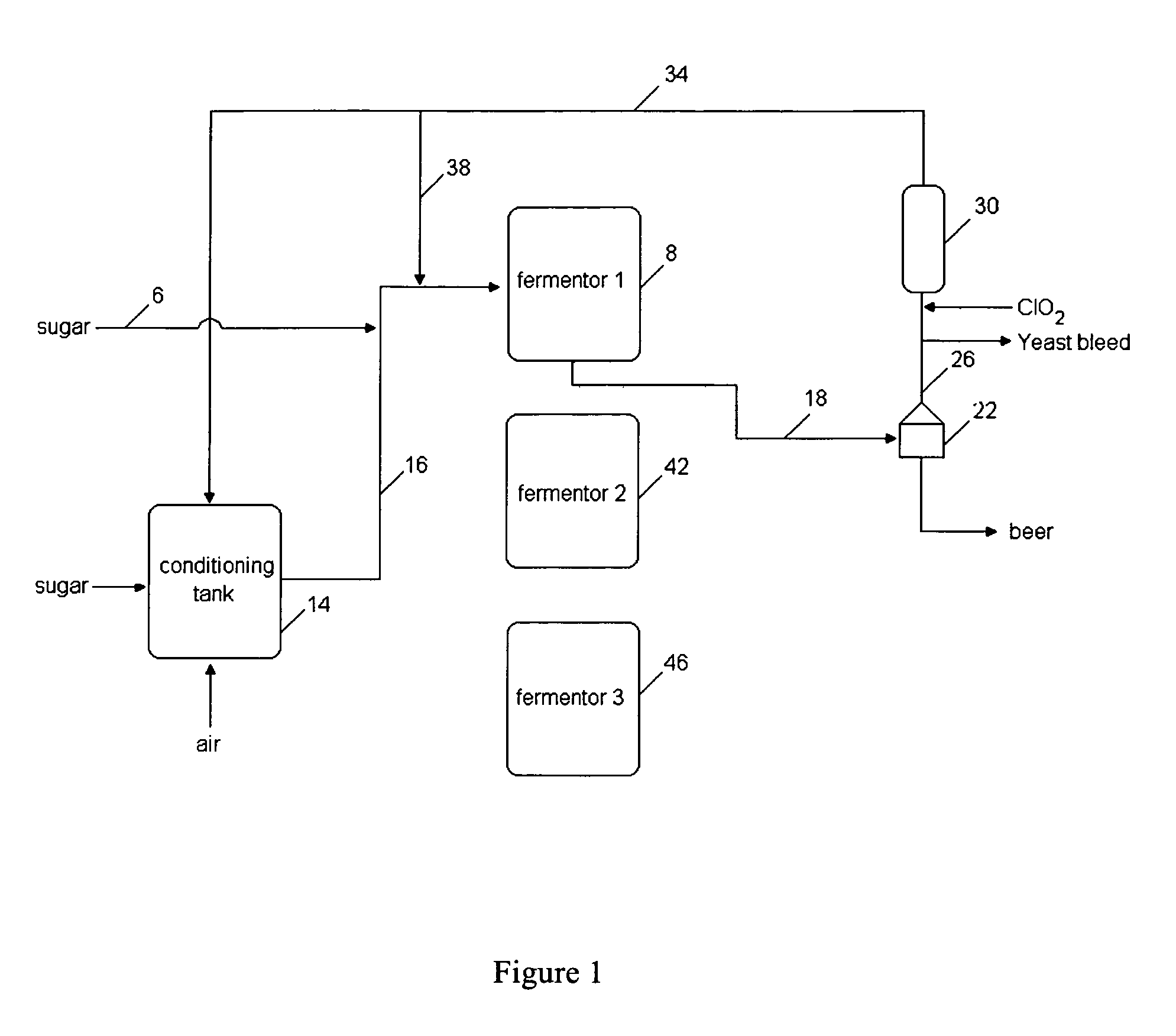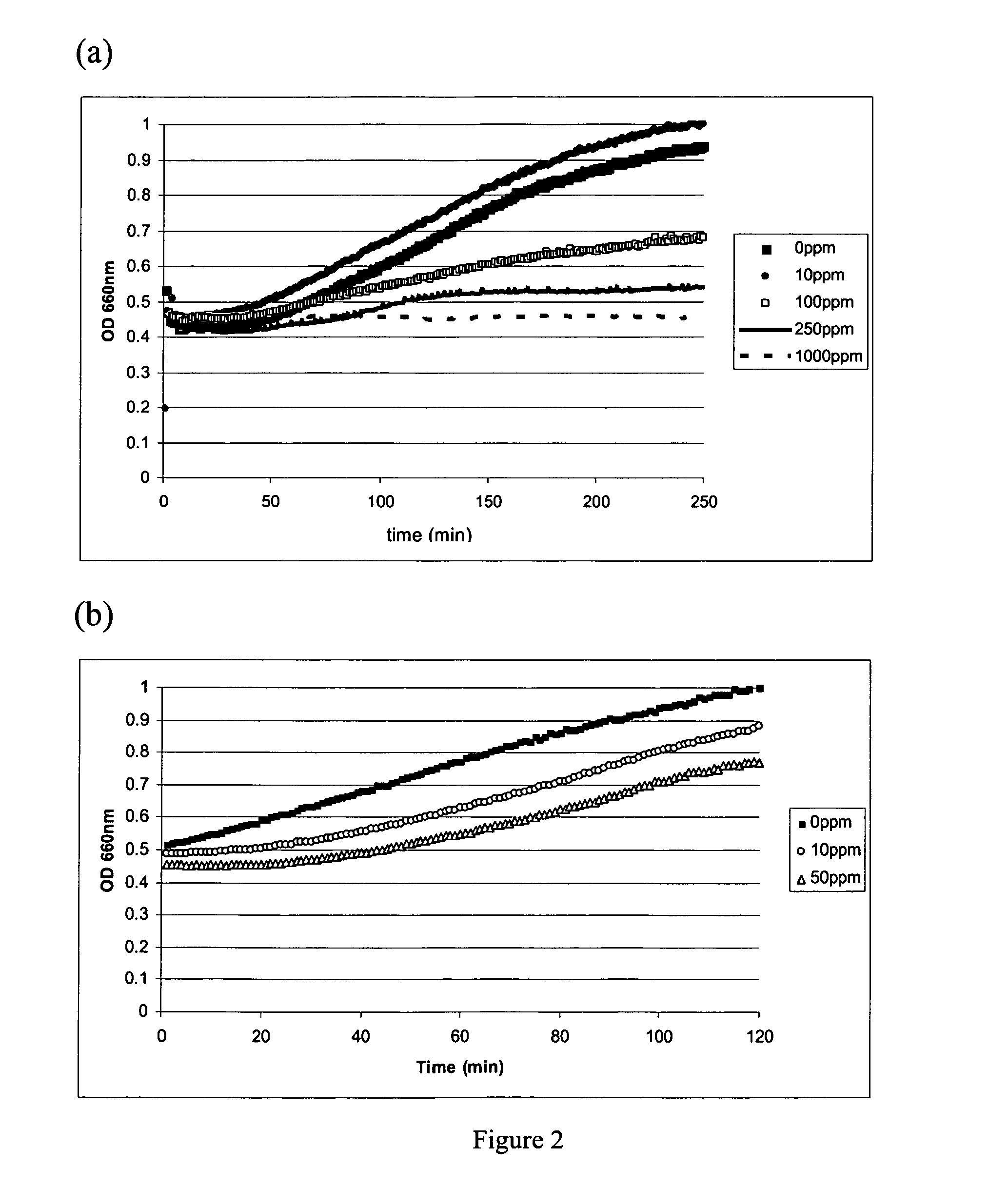Method for the production of a fermentation product from a pretreated lignocellulosic feedstock
a technology of pretreatment and lignocellulosic feedstock, which is applied in the direction of fermentation, biofuels, etc., can solve the problems of only a limited impact of processes on reducing greenhouse gases, ethanol from these feedstocks, and only a limited impact of processes, so as to increase the concentration of yeast, reduce the time of fermentation, and increase the volumetric productivity of fermentation
- Summary
- Abstract
- Description
- Claims
- Application Information
AI Technical Summary
Benefits of technology
Problems solved by technology
Method used
Image
Examples
example 1
Yeast Strains
[0103]The Saccharomyces strain used in this study is a recombinant strain containing multiple copies of the Pichia stipitis genes encoding xylose reductase and xylitol dehydrogenase and the S. cerevisiae gene encoding xylulokinase integrated into its genome as described in U.S. Pat. No. 5,789,210. The Candida tropicalis strain is ATCC 1369.
example 2
14L Fed-batch Fermentations of recombinant Saccharomyces and Candida tropicalis with xylose-containing lignocellulose hydrolysate.
[0104]2a. Saccharomyces
[0105]Saccharomyces cells from a frozen glycerol stock used to inoculate 4L of Sc Inoculation Medium (pH 6.). The inoculum was grown with shaking at 160 rpm for 24 h at 30° C. The cells were harvested by centrifugation (4000 rpm for 5 min) and the entire cell pellet was resuspended in about 50 mL of the supernatant and this was used to inoculate 20 L of Sc Propagation Medium (pH 5.0). A fed-batch fermentation was run for 4 days with mild aeration of 56 slpm and 500 rpm agitation by mechanical stirring. pH was maintained at 5.0 and the temperature was maintained at 30° C. for the first two days followed by 28° C. for the last two days. A 60 g / L glucose solution was fed to the vessel at a rate of 83.3 mL / h. The culture was sampled three times daily and the samples analyzed for cell growth, xylose and glucose. At the end of the fermen...
example 3
Control of Bacterial Contamination on a Contaminated Broth Sample
[0109]A bacterially contaminated broth sample was obtained from the pilot fermentation described in Example 2a.
[0110]In order to isolate and selectively propagate the contaminants, samples of contaminated broth (5 mL) was filtered through a GF / A 40 mm filter paper with pore size 1.6 μm, into a 300 mL vacuum flask using vacuum filtration to remove suspended solids and yeast. It was rinsed with YEP-glucose medium (10.0 g / L yeast extract, 20.0 g / L peptone and 50.0 g / L glucose) at approximately every 1.5 mL and then rinsed with the remaining media. A total of 200 mL of media was used for rinsing. The filtrate was then transferred to an empty 300 mL flask, which was then cultivated with shaking at 160 RPM and 30° C. for approximately 16 hours. This formed the bacteria inoculum for the experiment
[0111]Samples were prepared in cuvettes containing 3 mL of YEP-glucose media and 48 μL of the bacteria inoculum. Each cuvette was d...
PUM
| Property | Measurement | Unit |
|---|---|---|
| concentration | aaaaa | aaaaa |
| concentration | aaaaa | aaaaa |
| temperature | aaaaa | aaaaa |
Abstract
Description
Claims
Application Information
 Login to View More
Login to View More - R&D
- Intellectual Property
- Life Sciences
- Materials
- Tech Scout
- Unparalleled Data Quality
- Higher Quality Content
- 60% Fewer Hallucinations
Browse by: Latest US Patents, China's latest patents, Technical Efficacy Thesaurus, Application Domain, Technology Topic, Popular Technical Reports.
© 2025 PatSnap. All rights reserved.Legal|Privacy policy|Modern Slavery Act Transparency Statement|Sitemap|About US| Contact US: help@patsnap.com



